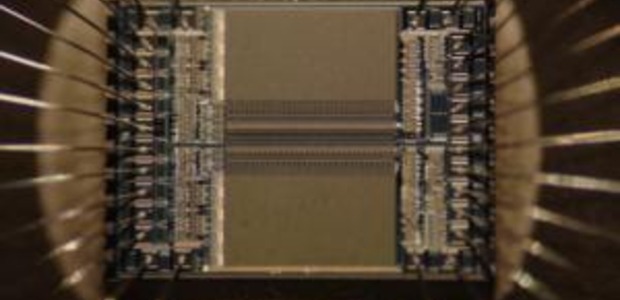advertisement
Researchers create memory chips that store and process data

Computer scientists in Singapore and Germany have collaborated to create a resistive RAM chip that not only stores data but can act as a computer processor.
The breakthrough uses state-of-the-art memory chips known as Redox-based, resistive switching random access memory (ReRAM) and could lead to much faster and thinner mobile devices. Today’s computers must transfer data from the memory storage to the processor unit for computation, which along with slowing performance also requires more power.
“This is like having a long conversation with someone through a tiny translator, which is a time-consuming and effort-intensive process,” said Anupam Chattopadhyay, an assistant professor at Nanyang Technological University (NTU) in Singapore. “We are now able to increase the capacity of the translator, so it can process data more efficiently.”
advertisement
While the new circuit saves time and energy by eliminating data transfers between disparate storage and processors, it can also boost the speed of processors found in laptops and mobile devices by at least two times or more, the researchers said.
By making the memory chip perform computing tasks, space can be saved by eliminating the processor, leading to thinner, smaller and lighter electronics. The discovery could also lead to new design possibilities for consumer electronics and wearable technology, the researcher said.
NTU researchers worked with others from Germany’s RWTH Aachen University and Forschungszentrum Juelich to create the new memory chips. Their research was published in the peer reviewed journal Scientific Reports.
advertisement
Also known as memristor, the ReRAM came from global chipmakers such as SanDisk and Panasonic. ReRAM chips are one of the fastest memories on the market and are already commercially available for IoT applications. In 2015, Hewlett-Packard and SanDisk also announced an agreement to jointly develop “Storage Class Memory” (SCM) ReRAM that could replace DRAM and would be 1,000 times faster than NAND flash.
Until memristor, researchers knew of only three basic circuit elements — the resistor, the capacitor and the inductor. Memristor added a fourth, which consumed far less energy than previous technologies.
While ReRAM has been under development for many years as a storage technology, NTU’s Chattopadhyay, in collaboration with Professor Rainer Waser from RWTH Aachen University and Vikas Rana from Forschungszentrum Juelich, demonstrated for the first time how it could also process data.
advertisement
“The quest for faster processing is one of the most pressing needs for industries worldwide, as computer software is getting increasingly complex while data centers have to deal with more information than ever,” the researchers stated in a new release.
How the ReRAM works
Computer processors today use the binary system where bits of data are represented as either a 0 or a 1. For example, the letter A will be processed and stored as 01000001, an 8-bit character.
However, the prototype ReRAM circuit built by Chattopadhyay and the other researchers processes data in three states instead of two. For example, it can store and process data as 0, 1 or 2, known as the Ternary number system.
“Because ReRAM uses different electrical resistance to store information, it could be possible to store the data in an even higher number of states, hence speeding up computing tasks beyond current limitations,” the researchers stated.
The researchers plan to develop the ReRAM to process more than its current three states, which will lead to even greater improvements of computing speeds.
Using ReRAM for computing will be more cost-effective than other bleeding-edge computing technologies on the horizon, since ReRAMs will be available in the market soon.
“Using them not only for data storage but also for computation could open a completely new route towards an effective use of energy in the information technology,” Waser stated.